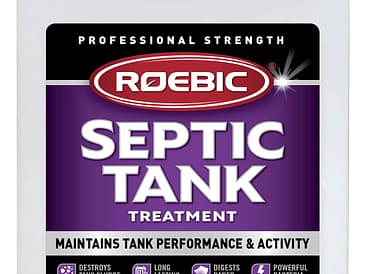
If you’re considering installing a septic system for your home, you might be wondering which kind of septic tank you should choose. The IM-Series septic tanks are known to be durable and watertight. They are ideal for a home with heavy rains or water-logged areas.
Installing a septic tank
If you are looking to install a septic tank, you need to be sure that the installation is done properly. There are several different kinds of systems that you can choose from, so you will want to look into all of the options before making a decision.
One of the best ways to get a septic system installed is to use Infiltrator chambers. These are easy to install and will save you money in the long run. They also provide superior treatment.
Infiltrator chambers are available in a variety of sizes and can be installed in beds or in trenches. They can be used in almost any septic leach field application. You can also install them in elevated mounds.
Infiltrator chambers can save you money because they are cheaper than pipe. It is also more durable. They are made from chemical resistant polyethylene, so they are resistant to damage.
They are designed to last for many years, so you can be confident that your installation will last. However, you will need to make sure that you have the proper permits for the installation. The process will vary from state to state, so you will need to check with your local building department.
Before purchasing land for the septic tank, you will need to do a percolation test to determine how well the soil will absorb the liquid. This will ensure that the soil around your tank will be permeable.
Once you have chosen the type of system that you will use, you will need to get a permit. The cost will vary based on your state, but a typical septic tank will cost around $1,500 for a 1,000 gallon unit.
The septic tank should be installed by a licensed septic tank installer. Septic tank permits typically need to be renewed every few years, so it is important to have one in place. When choosing a septic tank, you should compare different companies and their prices.
An Infiltrator septic tank can be installed with a variety of different backfill materials. The maximum depth that you should backfill is set by the manufacturer. Excessive depth can cause chambers to deform.
Testing your septic system
If you’re considering upgrading or installing an infiltrator chamber septic system, there are a few things to keep in mind. First, it’s important to make sure you have enough room for a new system. In addition, you should check your septic tank and leaching field for structural problems. Also, it’s a good idea to run a camera inspection.
Before you start, you should check with your local health department for regulations. They may have special maintenance requirements. You can also request guidance from a licensed septic contractor.
It’s a good idea to have the soil tested to find out how it absorbs the wastewater. The composition of the soil will determine how well the system is performing.
A test pit should be at least six feet deep to determine the amount of solids and other materials that are present in the soil. If your soil tests show a lot of material, you might need to replace your septic tank or leaching field.
An Infiltrator chamber septic system is designed to allow for lateral leaching of effluent into the soil. This helps avoid contamination of groundwater. These chambers come in various sizes, so you should be able to find one to suit your needs.
When you install an Infiltrator chamber, you’ll need to place a 4-inch pipe into the chamber. You should also use a plastic pipe that’s watertight. Alternatively, you could install a fiberglass tank, which offers a nearly watertight seal.
You will also need to place an end cap on the pipe. For very sharp turns, you might need to insert quarter bends into the pipe.
Finally, you will want to check for odors in your leaching field. Septic tank odors are a sign of a clogged system. However, you can also check for a rotten egg odor, which is a buildup of organic matter in the plumbing.
If you want a faster alternative solution, consider Bio-Sol shock treatments. These treatments contain bacteria and enzymes that break down organic matter in the leaching bed. They are safe, ecological, and effective.
After the installation, you’ll need to run a percolation test to determine the rate at which the soil is absorbing the wastewater. A sewage system permit isn’t necessary for these tests.
Maintenance products not approved by the FDA
If you’re installing a new septic system, you might be surprised to learn that there are not many maintenance products that can help you get the most out of it. However, there are a few that can help. These include an aerobic treatment unit, media filters, and other systems for advanced wastewater treatment.
One product, the Aquaworx Remediator, uses an air diffuser to improve the natural process of treating wastewater. It is a simple, easy to operate solution that can help rejuvenate even the most neglected septic systems. The ‘Fine Bubble Air Diffuser’ allows aerobic bacteria to flourish, which results in a clog-free septic system.
Another good option is a chamber drain field system. These units provide a smaller footprint than traditional septic systems, which means fewer messy installations. They are engineered for strength, so you can expect a five-year manufacturer’s warranty on your tank.
Infiltrator’s Quick4 Plus(tm) series is an excellent choice, especially if you are looking for a top-of-the-line septic leach field solution. Each chamber is constructed with high-density polyethylene arches that interlock to form a continuous drainage area. The chambers are capable of handling 16,000 pounds of load per axle, and each has a 47 gallon storage capacity.
When choosing the best septic leach field solution, you’ll want to consider the features of each design. You’ll need to think about what kind of soil you have and what kind of drainage you intend to have. For example, if you’re planning to have your septic leach field on a slope, you might need to invest in a geofabric cover. Alternatively, you can upgrade to gravel.
Of course, the real key to a successful septic leach field is having the right septic system in the first place. This can be achieved through a number of steps, including a test pit that’s at least six feet deep to determine the optimum soil composition for your application. Fortunately, there are several innovative products on the market, including Infiltrator’s chamber septic leach field system. Choosing the right model can make all the difference.
As with all septic systems, you’ll need to be vigilant about proper installation and maintenance. By following the right steps and selecting the right system for your home or business, you’ll have a happy and healthy septic leach field for years to come.
IM-Series septic tanks are durable and watertight
The Infiltrator IM-Series of Potable Water Tanks offer exceptional strength, durability, and watertightness. They are made of polypropylene, which is comparable to concrete in strength and cost.
These septic tanks are manufactured with reinforced access ports, and inboard lifting lugs. This design is ideal for septic contractors.
Infiltrator’s IM-Series Potable Water Tanks are available in 1287-gallon and 1787-gallon capacities. They are available in round and rectangular shapes. Their two-piece designs are watertight and can be pumped dry during pump-outs.
IM-Series potable water tanks are offered with heavy-duty lids. These durable septic tanks do not require special backfill. However, they are designed to be placed at least as deep as the sewer pipe from the house.
The septic tank is a large, watertight buried container that separates solids from raw sewage. Raw sewage enters the tank through plumbing drains, while the settleable solids are absorbed into the septic tank.
The septic tank is able to hold up to 120 gallons of flow per day. It is recommended that the septic tank is sized for the maximum capacity of the home. A tank that is not deep enough may leak untreated sewage into the ground.
If you are installing an Infiltrator tank, you will need to follow a few special requirements. These include the use of stabilizing tees, crosses, or J-hooks to keep the pipes level. You should also install a manhole for agitation.
When installing your septic tank, you will need to select a 4-inch diameter Schedule 40 PVC pipe. This pipe should be watertight and have a slope of at least one inch per foot. Installing baffles on the inlet and outlet pipes will help prevent clogging.
An effective absorption field system can last for up to 25 years with proper maintenance. A septic tank should be checked periodically, and cleaned by a service professional.
Some newer septic tank designs now incorporate septic tank filters. These screens improve treatment by trapping solids. To ensure that the filters remain clean, you should hose them occasionally. Also, you should dispose of hazardous household chemicals at an approved hazardous waste collection facility.





